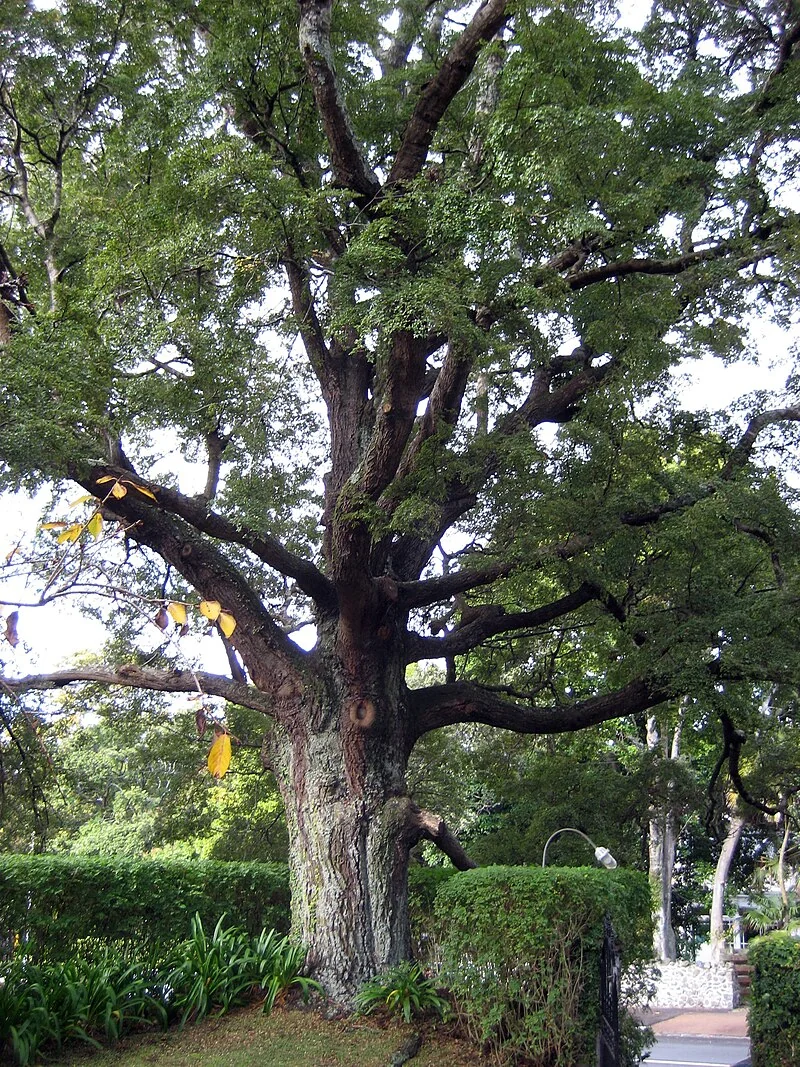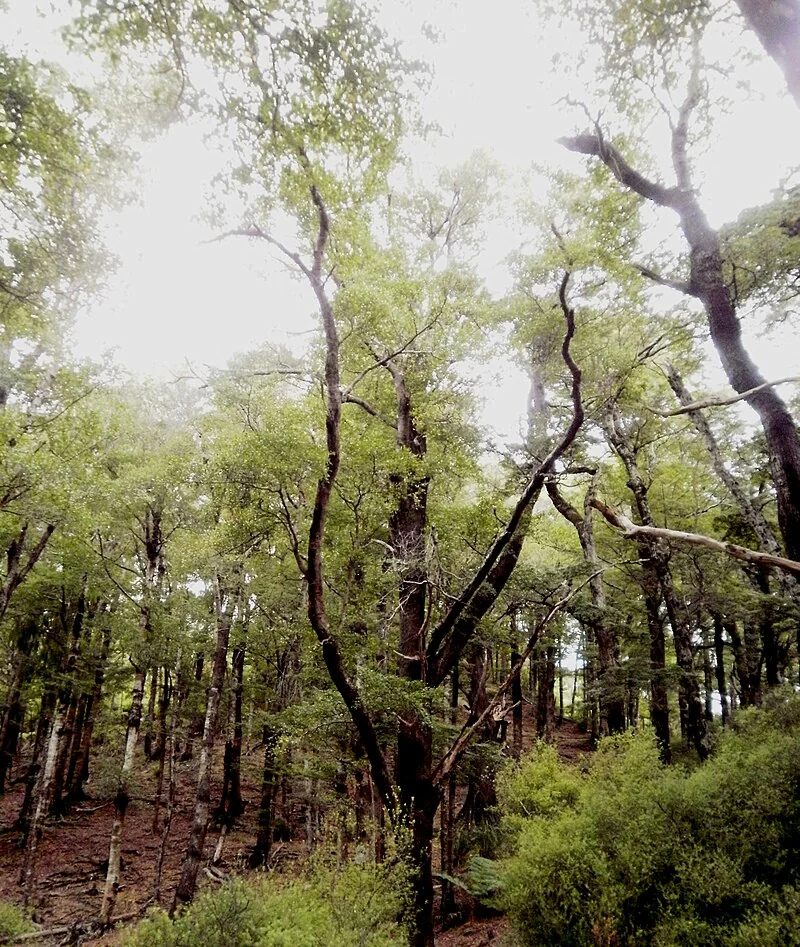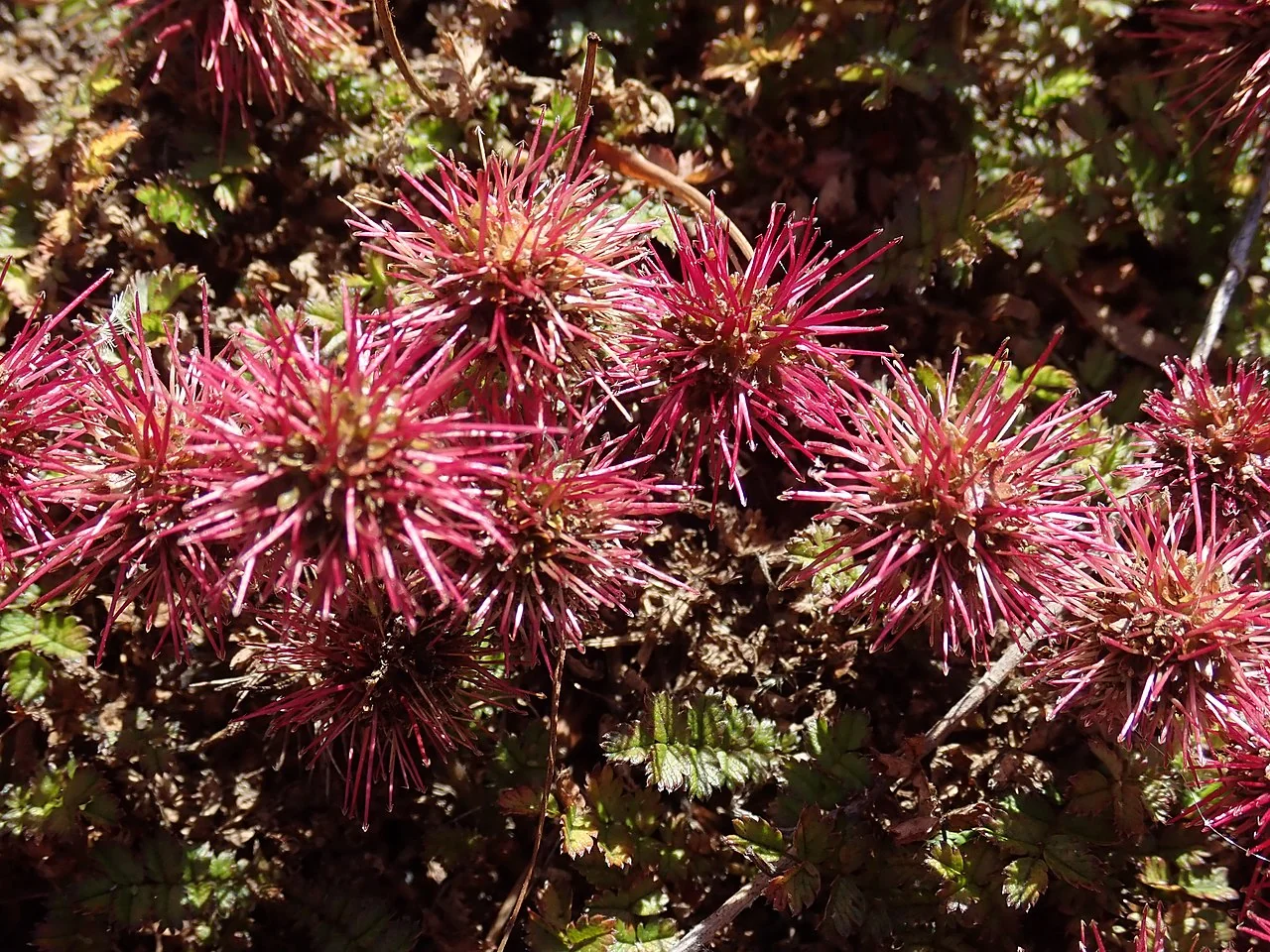
Black Beech
Fuscospora solandri
Black Beech, known as Tawhai pango in te reo Māori, is a distinctive evergreen tree reaching 20-25 meters tall, famous for its dark, sooty appearance caused by scale insect honeydew and subsequent mold growth. This hardy species has small oval leaves and smooth-margined foliage that distinguishes it from other beech trees. The honeydew produced by scale insects provides crucial high-energy food for kākā and other native birds, making this tree an important ecological resource in New Zealand's native trees .

Plant Description
Botanical Features
Fuscospora solandri , commonly known as Black Beech or Tāwhairauriki, is a large, evergreen tree endemic to New Zealand. It can grow up to 25-30 meters tall and is often a dominant canopy tree in lowland to montane forests. Its bark is rough, furrowed, and typically charcoal black, often appearing sooty due to a mutualistic relationship with scale insects that excrete honeydew. The leaves are small, leathery, dark green, and oval-shaped, measuring 10-15 mm long, arranged along the twig, pale underneath, and have slightly incurved margins with a rounded tip. The leaves deepen in colour during winter. Inconspicuous, small red-brown flowers are produced in spring, attracting birds and other wildlife. It grows at lower altitudes than its close relative, Mountain Beech, thriving in full sun or partial shade on well-drained sites and is tolerant of frost and cool climates.
Quick Facts
Quick Facts Overview
| Scientific Name | Fuscospora Solandri |
|---|---|
| Height | 20-25 meters (up to 30 m in ideal conditions) |
| Spread | 12-18 meters |
| Water Needs | Moderate |
| Light | Full sun to partial shade |
| Frost Tolerance | High (hardy to -12°C) |
| Salt Tolerance | Low to moderate |
| Growth Rate | Moderate |
| Lifespan | 300-400 years |
Climate Best Suited to
Black Beech thrives in montane forests below 600 meters elevation, particularly on drier eastern slopes throughout New Zealand. It tolerates exposure well and performs best in areas with moderate rainfall and good air circulation. This hardy species adapts to various climate conditions from coastal to inland environments.
Regional Suitability
| Whangārei | Ideal |
| Auckland | Ideal |
| Hamilton | Suitable |
| Rotorua | Suitable |
| Tauranga | Ideal |
| Gisborne | Ideal |
| New Plymouth | Ideal |
| Whanganui | Ideal |
| Palmerston North | Suitable |
| Napier | Ideal |
| Wellington | Ideal |
| Nelson | Ideal |
| Christchurch | Suitable |
| Dunedin | Suitable |
| Invercargill | Suitable |
| City | Climate Suitability |
|---|
Plant Habitat
Fuscospora solandri , commonly known as black beech, is a tree species endemic to New Zealand. Its natural habitat is lowland to montane forests, where it can sometimes be the dominant canopy species, forming its own distinct forest type.
This tree is found on both the North and South Islands of New Zealand, though it is very rare north of the Central Volcanic Plateau and East Cape, with Little Barrier Island being its current northern limit. It typically grows in montane forests below 600 meters elevation, particularly on drier eastern slopes. It can be found in mixed forests alongside podocarp/broadleaf species and Fuscospora truncata in the North Island and northwest South Island.
Plant Conservation
The conservation status of Fuscospora solandri , also known as black beech, is "Least Concern" according to the IUCN 3.1 classification. In 2012, when it was classified as Nothofagus solandri var. solandri, it was considered "Not Threatened" in New Zealand.
Growing Requirements
Soil Requirements
Black Beech adapts to a range of soil types:
- Prefers moist , well-drained soils but tolerates various conditions
- Grows well in moderately fertile to poor soils
- Cannot tolerate waterlogged or poorly drained sites
- Suitable for slightly acidic to neutral pH (6.0-7.0)
- Performs well on slopes and elevated sites
Light Requirements
Black Beech tolerates exposure well once established:
- Full sun to partial shade (minimum 4-6 hours daily)
- Good tolerance for windy, exposed sites
- Young trees benefit from initial wind protection
- Develops best crown form in full sun exposure
Water Requirements
Black Beech has moderate water requirements:
- Regular watering during establishment (first 2-3 years)
- Moderate drought tolerance once established
- Performs well with natural rainfall in most NZ locations
- Avoid overwatering which can promote root diseases
- Benefits from consistent soil moisture during growing season
Planting Guide
When to Plant
Plant Black Beech during autumn or early spring when soil conditions are favorable and temperatures are moderate. This hardy species establishes well when planted during cool, moist periods.
Site Selection
Choose a site with:
- Full sun to partial shade with good air circulation
- Moist, well-drained soil (adaptable to various soil types)
- Space to accommodate distinctive black appearance
- Room for mature size (25 m tall, 15 m spread)
Planting Procedure
- Dig planting hole 2-3 times wider than root ball
- Ensure good drainage while maintaining soil moisture retention
- Position tree at same level as in container or nursery
- Backfill with original soil mixed with compost
- Water thoroughly to eliminate air pockets
- Create shallow watering basin around tree
- Apply 10cm layer of organic mulch around base
Initial Care
Provide regular watering during establishment period. Black Beech typically develops its characteristic scale insect population and dark appearance within 3-5 years of planting.
Ecological Role
Environmental Impact
Mountain beech forms the backbone of New Zealand's montane forest ecosystems, creating extensive pure stands or mixed forests that provide critical habitat for numerous endemic species including native birds, bats, invertebrates, and specialized beech forest plants. The periodic mast fruiting creates boom-bust cycles that drive complex ecological relationships, supporting native wildlife during abundant years while influencing predator-prey dynamics throughout the ecosystem. The species ' extensive root networks and mycorrhizal associations contribute to forest health and nutrient cycling, while its ability to dominate challenging mountain environments makes it essential for maintaining forest cover and preventing erosion in steep terrain.
Uses Section
Uses Section Overview
This versatile native plant offers multiple practical applications in landscaping and garden design, from providing ground cover and erosion control to creating habitat for native wildlife. The plant 's natural characteristics make it valuable for restoration projects and sustainable gardening practices.
Cultural Significance
Traditional Uses and Values
Fuscospora solandri , commonly known as black beech, holds significant cultural importance in New Zealand, particularly for Māori. Its distinctive appearance and prevalence in mountain forests made it valuable for traditional navigation and marking territorial boundaries.
Beyond its role in wayfinding, the bark of the black beech was traditionally used for medicinal purposes to treat various ailments. Today, the species continues to be culturally significant as one of New Zealand's characteristic forest trees and is still incorporated into contemporary Māori cultural practices and environmental education.
The tree is also known for its association with a sooty mold, which covers its trunk and branches. This mold is a result of scale insect infestation, where the insects excrete honeydew. This honeydew not only feeds the mold but also serves as a vital high-energy food source for various birds and insects, including the kākā.
Landscaping Section
Landscaping Section Overview
This section provides important information about plant care and cultivation practices. Understanding these aspects helps ensure successful growth and development in garden conditions.
Seasonal Care Calendar
Spring
- New growth begins with fresh green leaves
- Scale insect activity increases, honeydew production begins
- Best time for planting new specimens
- Native bird activity increases around tree
Summer
- Flowering during mast years creates spectacular red displays
- Peak honeydew production attracts maximum bird activity
- Monitor for extreme heat stress on young trees
- Sooty mold development most visible during this period
Autumn
- Seeds mature and disperse during mast years
- Honeydew production continues providing bird food
- Good planting time before winter
- Collect seeds for propagation during mast years
Winter
- Tree enters dormancy with excellent cold tolerance
- Scale insect activity reduces, less honeydew produced
- Best time for structural pruning if necessary
- No special winter protection required
When to Prune and How Much
When to Prune and How Much Overview
Black Beech requires minimal pruning and naturally develops good structure:
- Remove dead , diseased, or damaged branches as needed
- Light structural pruning for young trees to establish single leader
- Avoid heavy pruning due to poor wound compartmentalization
- Late winter to early spring is optimal timing for any pruning
- Clean cuts essential due to susceptibility to fungal infections
Use very sharp, sterilized tools to minimize disease risk. The scale insect relationship means cuts should be clean and minimal to avoid disrupting the tree's natural balance.
How to Grow Black Beech
Black Beech, or Tawhai Pango, is a distinctive and hardy native tree that forms a significant component of New Zealand's montane forests. Its dark, sooty appearance, caused by a mutualistic relationship with scale insects, provides a unique aesthetic and a crucial food source for native birds. While it is a robust tree, successful cultivation requires attention to its specific needs, particularly regarding well-drained soil, moderate moisture, and protection from extreme heat when young. Understanding its propagation methods is key to successfully growing this iconic species.
From Seed
Propagating Black Beech from seed is the most common method, though it follows the mast year cycle common to all beech species, meaning viable seeds are only produced every 4-5 years. Collect fresh, winged nuts during autumn mast years. Clean the seeds and test their viability by floating them in water (viable seeds sink). Stratify the seeds in moist sand at 3-5°C for 12-14 weeks to break dormancy. Sow the stratified seeds in spring in a well-draining seed-raising mix, lightly covering them. Maintain cool, consistent conditions (15-20°C) and consistent moisture. Germination occurs over 6-10 weeks in spring. Seedlings are initially slow-growing and reach maturity after 20-30 years. Due to hybridization with other beech species, collect seeds from isolated specimens for pure-bred offspring.
From Cuttings
Propagation of Black Beech from cuttings is generally challenging and has variable success rates. Semi-hardwood cuttings can be attempted under mist with hormone treatment, but seed is generally preferred for restoration plantings due to the difficulty. If attempting cuttings, take healthy, current season's growth in late summer or early autumn. Cuttings should be about 4-6 inches long. Remove the lower leaves and dip the cut end in a rooting hormone. Plant the cuttings into a well-draining, sterile cutting mix, such as a blend of perlite and peat. Maintain high humidity around the cuttings, perhaps by placing them under a plastic dome or in a propagator, and provide bottom heat to encourage root development. Keep the medium consistently moist but not waterlogged. Rooting can be slow and success rates can be low, making this method more suitable for experienced propagators.
Pests and Diseases
Beech Scale Insect (Ultracoelostoma Assimile)
- Relationship: Mutualistic relationship providing honeydew for native wildlife
- Appearance: White waxy scales on bark creating characteristic black sooty appearance
- Management: Should not be controlled - essential part of forest ecosystem
- Benefits: Provides high -energy food for kākā, tūī, bellbirds, and native insects
Sooty Mold (Secondary Effect)
- Cause: Fungi growing on honeydew deposits from scale insects
- Appearance: Black coating on trunk, branches, and surrounding vegetation
- Impact: Cosmetic only - does not harm tree health
- Management: Natural part of ecosystem, should not be removed
Other Potential Issues
- Possums: May browse on foliage in high-density areas
- Root rot : Can occur in poorly drained soils
- Wind damage : Young trees may need protection from strong winds
The scale insect "infestation" on Black Beech is actually a beneficial ecological relationship that should be celebrated rather than controlled. This symbiosis is crucial for native bird survival.
Bonus Tip
The Sooty Beech
The characteristic black, sooty appearance of the Black Beech is not caused by the tree itself, but by a fascinating ecological relationship. The bark of the tree is home to a species of scale insect that feeds on the tree's sap and excretes a sugary substance called honeydew. This honeydew, in turn, provides a food source for a black, sooty mould that grows over the trunk and branches, giving the tree its distinctive dark colour. The honeydew is also a vital food source for native birds, such as the kākā, and insects.







